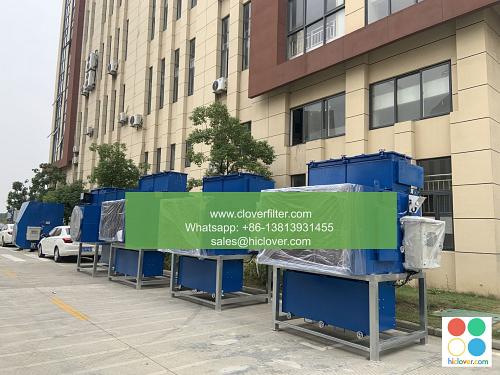Air Filter Ecosystems: A Review of Current Technologies and Trends

Air filter ecosystems have become an essential component in maintaining indoor air quality, and their importance cannot be overstated. With the increasing awareness of the impact of air pollution on human health, the demand for efficient air filter systems has skyrocketed. This article aims to provide a comprehensive review of current technologies and trends in air filter ecosystems, highlighting various application areas and key players in the industry.
Introduction to Air Filter Ecosystems
Air filter ecosystems refer to the integrated systems that combine air filters, sensors, and monitoring technologies to provide a holistic solution for indoor air quality management. These systems have evolved significantly over the years, incorporating advanced technologies such as nanofiltration, ultraviolet (UV) light disinfection, and artificial intelligence (AI)-powered monitoring systems. The primary goal of air filter ecosystems is to remove pollutants, allergens, and bacteria from the air, providing a healthy and safe environment for occupants.
Current Technologies in Air Filter Ecosystems
Several technologies are currently being used in air filter ecosystems, including:
- HEPA (High Efficiency Particulate Air) filters, which can capture 99.97% of particles as small as 0.3 microns
- Activated carbon filters, which can remove gases, odors, and chemicals from the air
- Electrostatic precipitators, which use electrostatic charges to attract and trap particles
- UV-C light disinfection, which can kill bacteria, viruses, and other microorganisms
- Increased adoption of IoT-enabled air filter systems, which can be remotely monitored and controlled
- Growing demand for energy-efficient air filter systems, which can reduce energy consumption and minimize environmental impact
- Rising interest in antimicrobial air filters, which can prevent the growth of bacteria and other microorganisms on the filter surface
- Development of nanofiber-based air filters, which can provide higher filtration efficiency and longer lifespan
- Commercial and industrial settings, such as offices, hospitals, and manufacturing facilities
- Residential buildings, including apartments, homes, and condominiums
- Transportation systems, such as cars, buses, and trains
- Aerospace and defense, where air filter ecosystems are critical for maintaining air quality in aircraft and other vehicles
These technologies have been widely adopted in various application areas, including commercial HVAC systems, industrial air purification, and residential air quality management.
Trends in Air Filter Ecosystems
The air filter ecosystem market is witnessing several trends that are shaping the future of the industry. Some of the key trends include:
These trends are driven by the increasing awareness of the importance of indoor air quality, as well as the need for more efficient and sustainable air filter solutions.
Application Areas of Air Filter Ecosystems
Air filter ecosystems have a wide range of applications, including:
The demand for air filter ecosystems is expected to grow significantly in these application areas, driven by the increasing awareness of the importance of indoor air quality and the need for more efficient and sustainable air filter solutions.
Conclusion
In conclusion, air filter ecosystems have become an essential component in maintaining indoor air quality, and their importance cannot be overstated. The current technologies and trends in air filter ecosystems, including nanofiltration, UV light disinfection, and AI-powered monitoring systems, are shaping the future of the industry. As the demand for efficient air filter systems continues to grow, it is essential to highlight the various application areas and key players in the industry, and to provide a comprehensive review of the current state of air filter ecosystems. You haven’t asked a question or provided any context. Please provide more information or ask a question so I can assist you.

